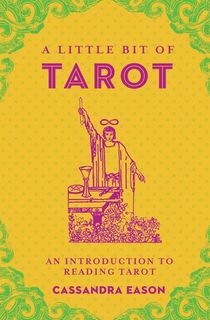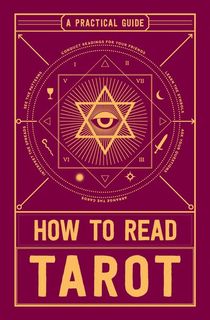At first glance, the world of tarot can be an intimidating place. There are so many different tarot decks to choose from. Then, there’s the matter of memorizing the meaning of 78 unique cards. And let’s not forget why tarot continues to intrigue us: using them as a divination tool. Any of these things can overwhelm a cartomancy initiate. All three together? It’s a lot. But like any craft that requires skill, tarot takes practice. The only way to learn is by doing.
Luckily, the foundations of tarot can be broken down into smaller, more digestible pieces. Here are some basics to get you started.
The Basics of Tarot
1. Selecting Your First Tarot Deck
Some traditions hold that you should be gifted your first tarot deck. These days, most tarot readers consider that impractical. You might end up waiting forever to receive one! Who wants that?
Instead, you should pick your first deck yourself. You’ll be working with it regularly, right? Wouldn’t you prefer having a deck you like?
Here are some things to consider when choosing a deck. Do you like the art? You’re going to be looking at the cards, after all. You don’t want to spend time staring at drawings you consider ugly. Next, what kind of symbolism do you vibe with? The beginner-friendly Rider-Waite-Smith system uses imagery that hints at each card’s meaning. Other decks draw from different sources for their symbolism, such as international folklore, shamanic practices, or even Jungian psychology. Finally, how do the cards feel in your hands? Do you like the weight of them? The size? The cardstock quality? These physical considerations may seem superficial and shallow, but they’re not. You want your first tarot deck to feel good in your hands.
There’s no right or wrong answer here. A wide array of tarot decks exist for a reason.
2. Learning Your Deck
Most tarot decks come with a booklet that details each card’s meaning. Learning them takes time and practice, and there’s no shame in referring to your deck’s guide when you’re unsure. As you’ll soon see, tarot divination is an intuitive practice, not a memorization exercise. You’ll find that the more you use your deck, the more you’ll grow familiar with the cards’ meanings and symbols.
3. Shuffling Your Deck
Prior to a reading, it’s good practice to shuffle your deck. Now, you might be tempted to treat your tarot deck like a regular set of playing cards. There’s nothing wrong with that per se, but you generally don’t use a riffle shuffle with tarot.
Like with all things related to tarot, there are multiple ways to shuffle your cards. Again, it depends on what you vibe with best. But if you don’t know where to start, one common method is the overhand shuffle. In this method, you hold the deck in one hand while using the other to lift small sections of cards free before dropping them back in a different place. If you find that your deck is too big for you to overhand shuffle comfortably, you can use the cut-and-restack method. Here, you cut the deck into three piles and then restack them in a different order. No matter which method you choose, the key is to shuffle your deck until it’s mixed to your satisfaction.
That said, when you’re shuffling your deck for the very first time, you need to make sure you mix the cards well. Otherwise, they’ll be in the order they were packaged, which does not make for an accurate reading. For this reason, many tarot readers prefer doing an initial shuffle that involves putting the deck on the floor and smooshing them around in circular motions before picking them up randomly and reassembling the deck for an overhand shuffle.
4. Reading Your Cards
Once you’ve shuffled your deck, the fun begins. In general, you draw cards from your shuffled deck and lay them out in a spread. Each position in a spread represents something. The combination of a card in a specific position, as well as the connection between cards in their respective positions, forms the foundation of a tarot reading.
There are as many different tarot layout spreads as there are tarot decks. Probably even more. Most readers have more than one spread in their arsenal, after all. The tarot spread you use will depend on the question, situation, or even the amount of time you have. Two popular tarot spreads are the linear three-card spread and the Celtic Cross.
As the name implies, the linear three-card spread involves drawing three cards and laying them side by side. This is one of the best tarot spreads for beginners. It’s both simple and flexible. It only requires three cards, but those three cards can represent a variety of things depending on your needs. Here are a couple newbie-friendly layouts to use with this spread:

- The Past
- The Present
- The Future
or
- The Problem
- The Action
- The Outcome
Thanks to pop culture, the Celtic Cross is probably the most recognizable tarot spread. It uses 10 cards and offers a level of detail not found in the basic three-card spread. Each of the 10 positions has a different meaning. You can see a diagram here:

- The querent’s present state.
- The problem or situation the querent currently faces.
- The querent’s conscious goal or aspiration while they work through their current situation.
- The underlying, subconscious motivations associated with the querent’s current situation.
- The past circumstances that led to the querent’s present situation.
- The querent’s immediate future, which is not to be confused with the problem’s resolution.
- The actions the querent can take to tackle their current situation.
- External factors affecting the current situation’s outcome.
- The querent’s hopes and fears regarding their present situation.
- The outcome of the querent’s situation based on their current course of action.
No matter which deck you choose, which shuffling method you use, or which layout you select, it helps to think of tarot not like a code to unlock but rather a conversation. It’s a conversation with your intuition. Once you think of it that way, hopefully the world of tarot becomes more approachable and less intimidating.
Books to Help You Learn More About Tarot

A Little Bit of Tarot
This beginner's guide by Cassandra Eason can help you set up your first reading and show you more ways of laying out the cards with real-life examples.

How to Read Tarot
An old art but a new book, this title by Adams Media proves that you don't need to have special power to use Tarot cards. From explanations for each card in the deck and how to interpret them, this is an easy-to-read, practical guide that covers the basics.

Tarot in Ten Minutes
If the three-card reading above seemed too big, this easy guide offers one- and two-card readings in addition to more difficult spreads like the Celtic Cross. This book by Richard T. Kaser also showcases the 29 basic questions of the Tarot and how to discover the two cards that reveal your true self.
Featured photo: Viva Luna Studios / Unsplash
